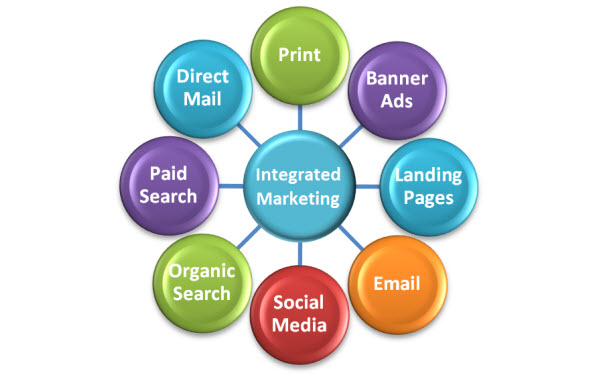

In today’s world, marketing isn’t just about being creative or original. It’s also important to be diversified, particularly in terms of how you’re marketing your products and services.
Many people talk about the Internet as though it’s a single entity, but this view couldn’t be further from the truth for marketers. Digital marketing requires a fully integrated campaign that is spread across multiple platforms. And while online marketing is crucial for companies, you shouldn’t forget about traditional forms of advertising to round out the campaign.
So, what are the elements of an integrated marketing campaign? Here are key areas you want to hit:
1. Print Marketing.
Even in this digital age, print is an important component of an integrated marketing campaign. After all, you can’t engage in email or social media marketing without establishing a presence, and print is a great way to be seen.
Print advertising generates brand awareness and can serve as a gateway to more personalized marketing, and it doesn’t require an Internet connection to read or share.
2. Banner Ads.
Some feel the banner ad has gone out of style, but if you’re looking for exposure, you could do a lot worse.
Banner ads create awareness of your brand and help to facilitate inquiries by prospective customers. Additionally, through targeted advertising, you can make sure your banner ads are targeted to certain demographics at certain times so they are seen by those most likely to be interested in your product and when they are most likely to purchase.
3. Landing Pages.
When someone clicks on an ad, you want to make sure they receive the right message. You also want to make sure these people have an easy way to take the next step in building a relationship.
Landing pages give you the opportunity to make a great first impression and to deliver very specific content. If your landing page is powerful enough, you’ll have people signing up for your email list in no time.
4. Email Marketing.
The most customizable, personalized and convenient way to market, email marketing allows you to constantly stay in touch with customers and keep them updated on your latest deals.
Email marketing also enables you to track which recipients click on your links and ultimately make purchases, helping you to understand the tendencies of your best customers.
5. Social Media.
It’s easy to get social media wrong, and there have been plenty of examples in the news when companies have blundered. But, if you take time to establish guidelines for your organization’s posts and replies, you’ll reap the benefits.
By creating relevant content for your followers, you’ll also strengthen their ties to your company and you’ll even find that they will market on your behalf. Establishing dialogue with and gathering from your followers is also a great way to make them feel special.
6. Organic Search Engine Marketing.
Search engines rank results based on how relevant pages are to specific search words and phrases. This means you can tailor your pages to become more relevant to popular search words, moving your website up the ranks.
This is referred to as Search Engine Optimization, or SEO. While this is a delicate science, it’s one that won’t cost you any money to employ if you decide to do it yourself.
7. Paid Search Engine Marketing.
If organic SEO isn’t up your alley, you can always buy your way to the top. Paid search means buying the rights to a specific search phrase and having your ad appear before, beside or below the organic search results. For example, you could buy the keywords “best digital camera” to ensure that your website is seen when someone’s search includes those words.
8. Direct Mail Marketing. Last but certainly not least, direct marketing is important and still brings big results. Taking the time and effort to mail something helps build brand perception.
A well-designed piece in someone’s home or business is a constant reminder to them of what you have to offer. And direct mail gives you the opportunity to pack in extra goodies, such as magnets, stickers and pens.
These marketing tactics can be effective on their own, but when used together you’ll see real impact. An effective integrated campaign uses the tactics that are most relevant to the target audience and is being monitored closely so that results can be analyzed to identify improvement opportunities.
